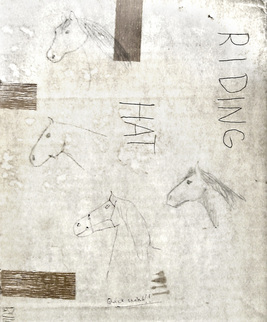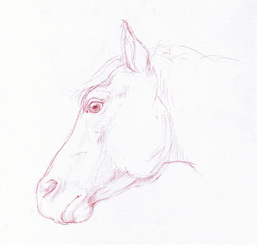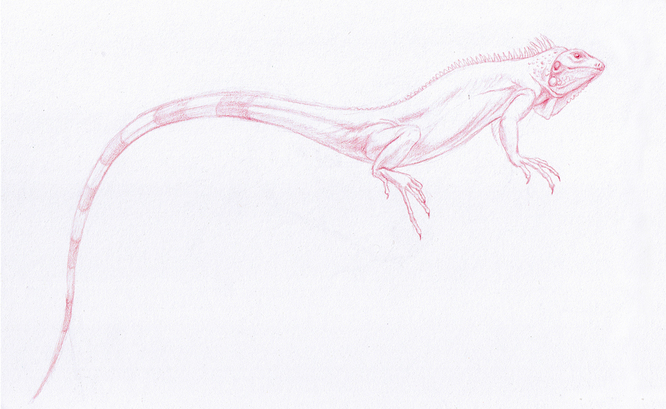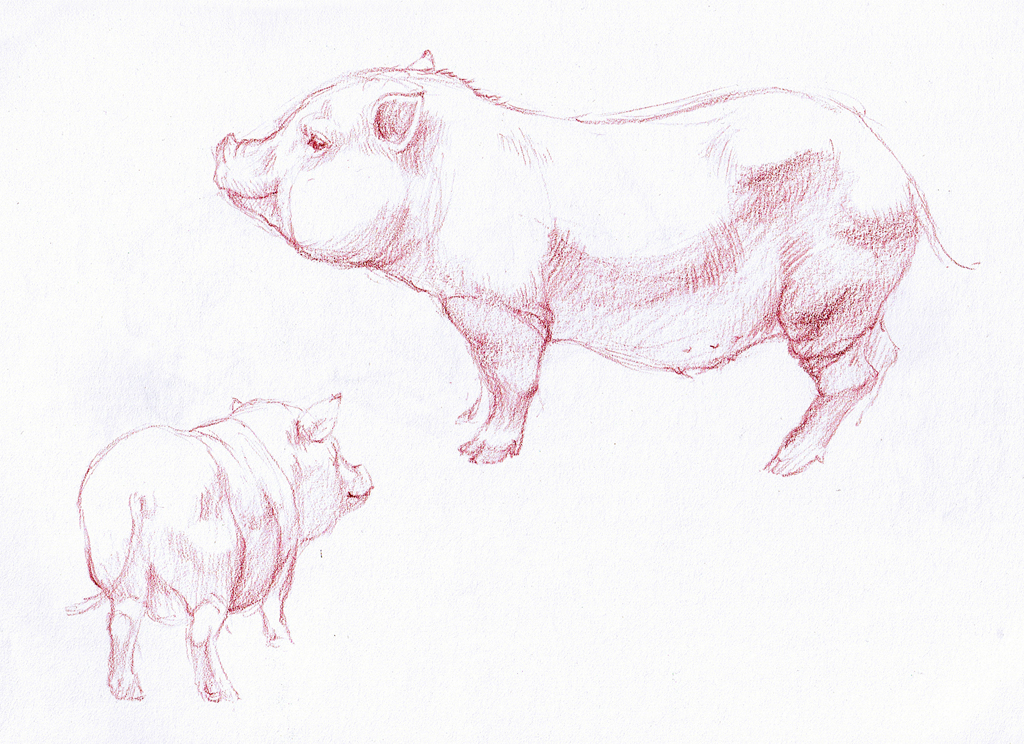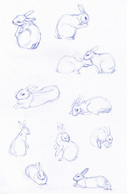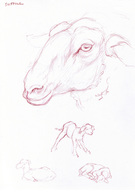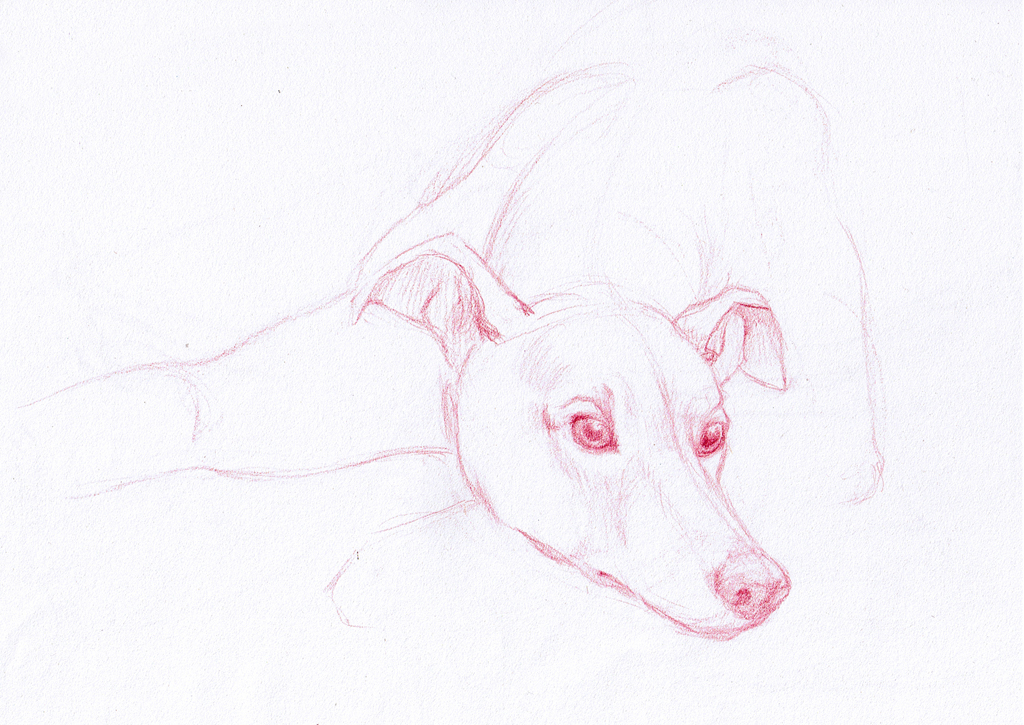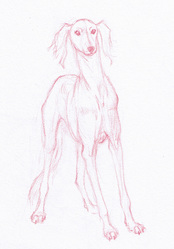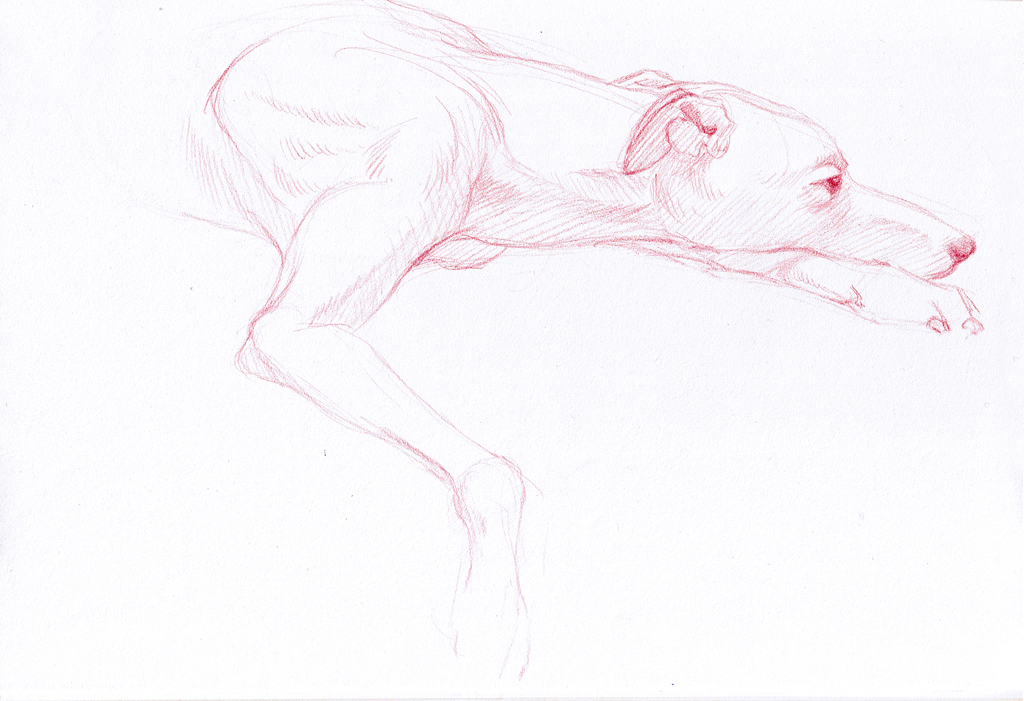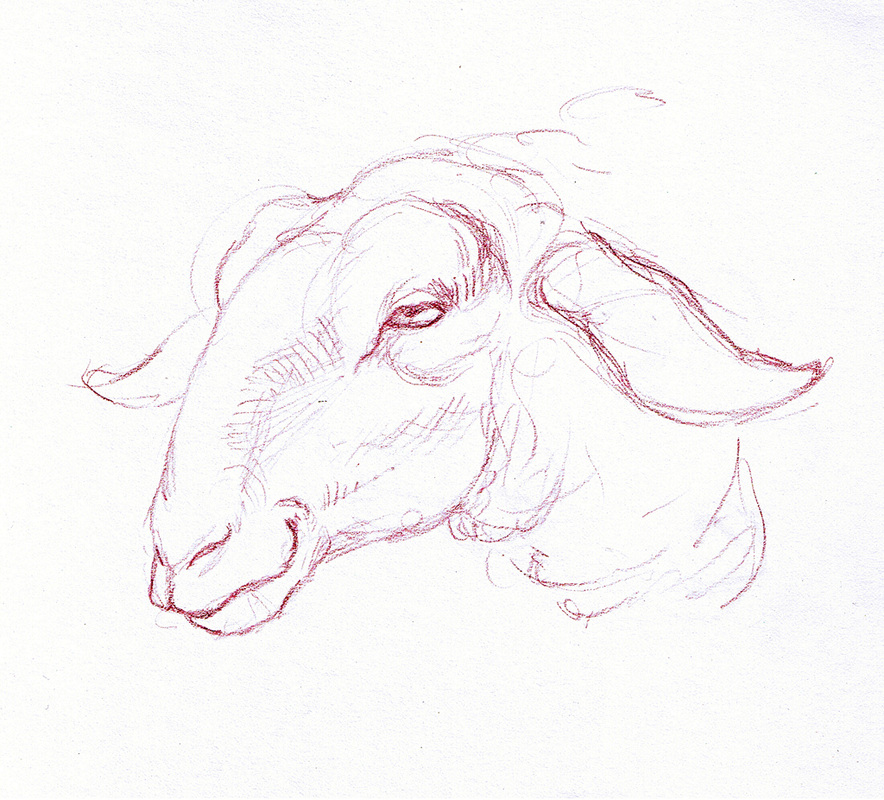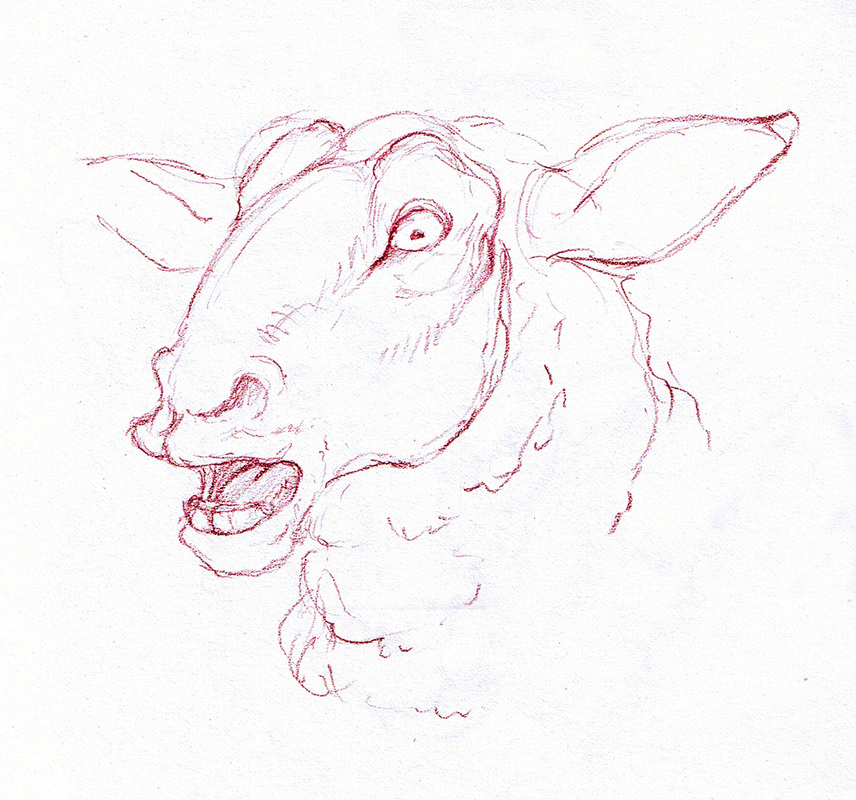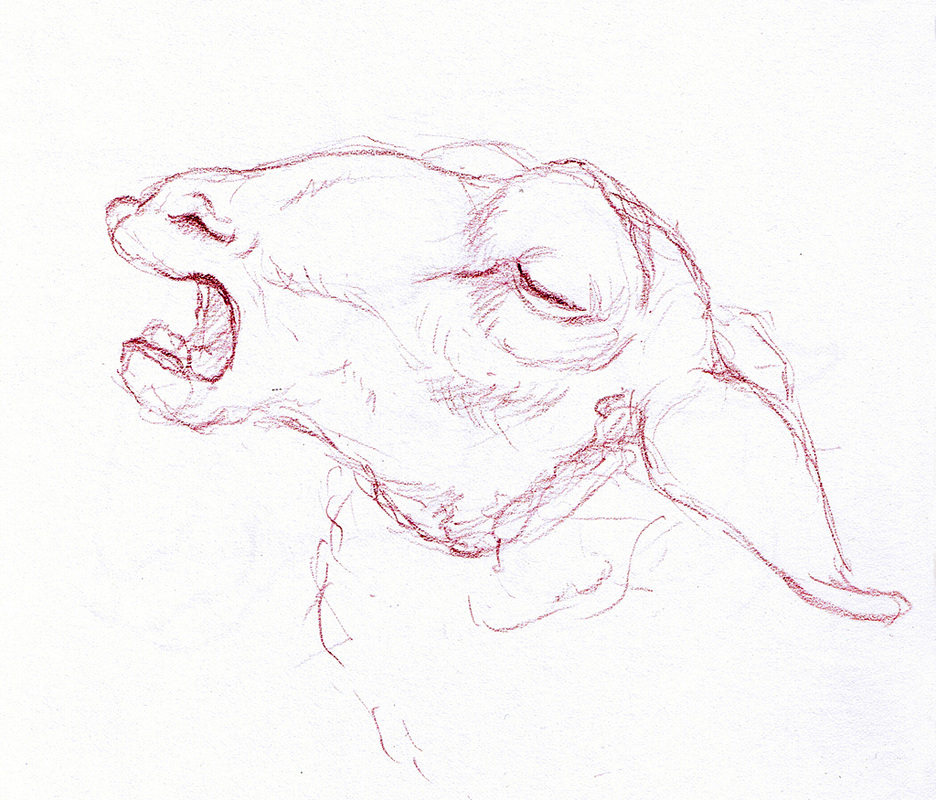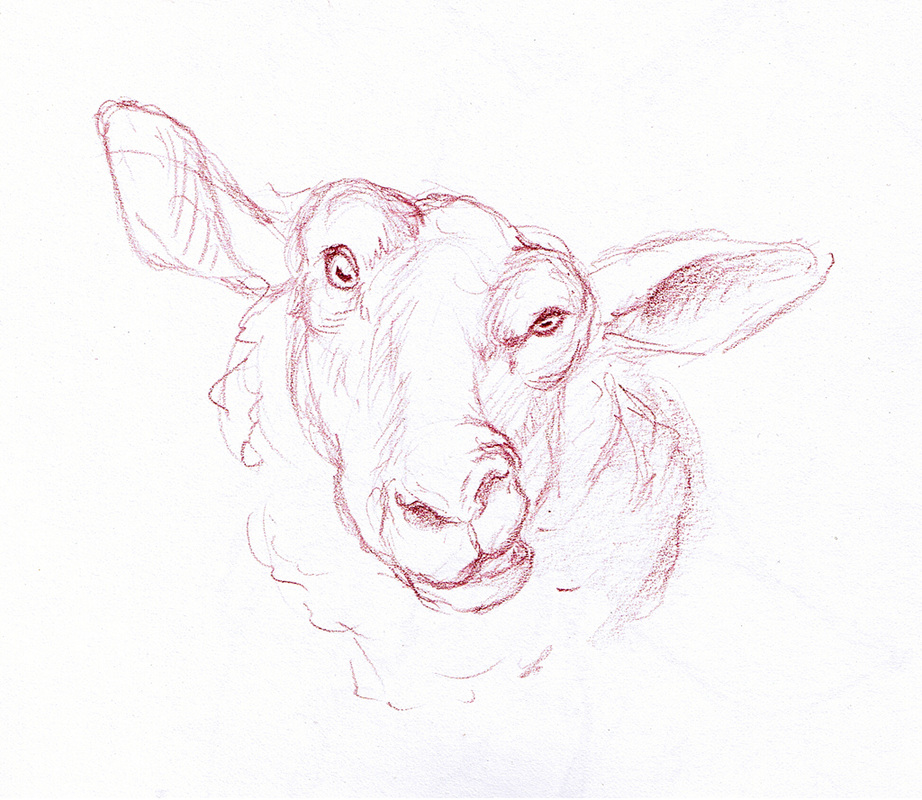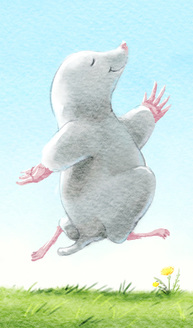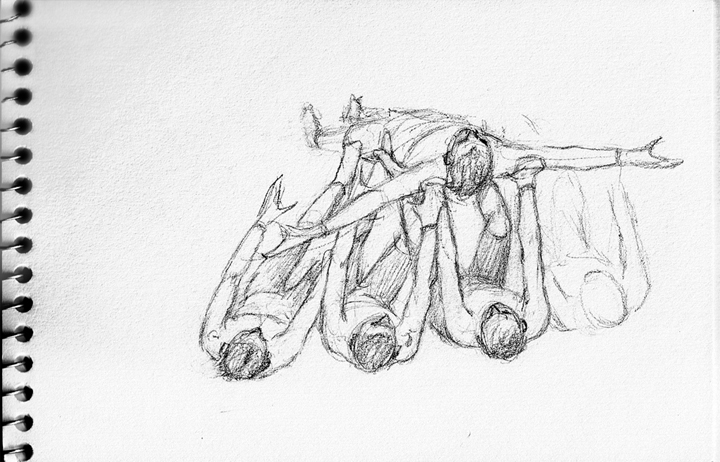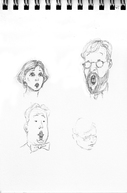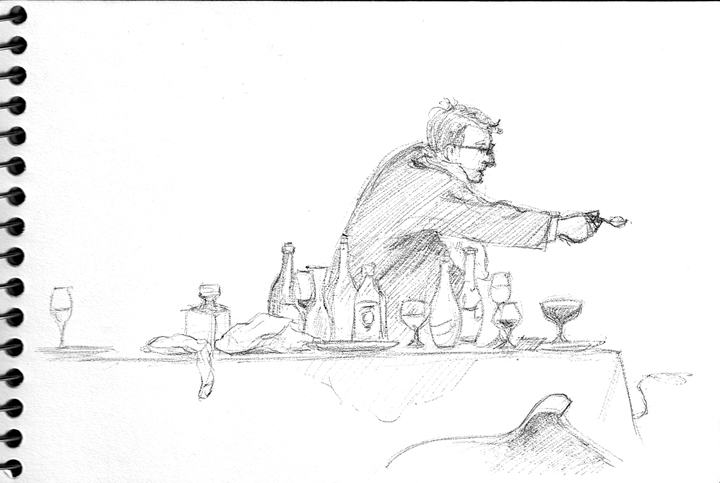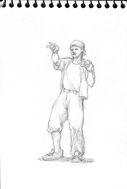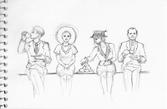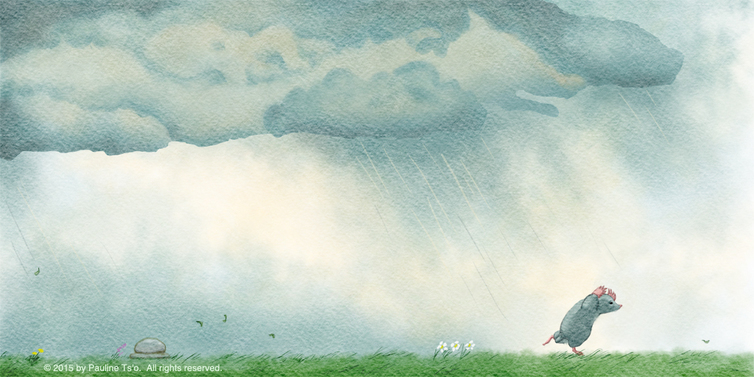Becoming an Artist
(or practice, practice, practice...)
(or practice, practice, practice...)
This page is dedicated to my mother, who was my first art instructor, and Henry Jones, my junior high school art teacher.
The only way to become an artist is to be one. Draw at any chance you can get and look at other artists work. That's it.
Well, not totally. What you should actually be learning when you draw is how to observe. Good observation skills are the cornerstone of all the arts, from drawing and painting to acting, animating, music, writing, etc. In the visual arts, these are the kinds of things you need to observe: proportion, color, light, gesture, and structure (for example, human and animal anatomy, how machines are put together, etc.). For writing, observation includes paying attention to how people talk, what they say, and why they do what they do.
The more you observe, the more you learn why something looks the way it does.
Well, not totally. What you should actually be learning when you draw is how to observe. Good observation skills are the cornerstone of all the arts, from drawing and painting to acting, animating, music, writing, etc. In the visual arts, these are the kinds of things you need to observe: proportion, color, light, gesture, and structure (for example, human and animal anatomy, how machines are put together, etc.). For writing, observation includes paying attention to how people talk, what they say, and why they do what they do.
The more you observe, the more you learn why something looks the way it does.
~~~~~~~~~~~~~~~~~~~~~~~~
When I was in elementary school, I loved drawing horses. I drew them a lot and was lucky enough to be able to take a few riding lessons. For some reason, I decided that every few years, I would draw a horse on the box that contained my riding helmet. I still have that box.
I don't know for sure, but I would guess that I drew the top horse when I was about 12 years old, the two middle horses when I was about 14, and the bottom horse when I was about eight or nine years old. Then, after another 20 or so more years of practicing, I drew the horse below.
During those 20 years and more, I took a lot of art classes, including watercolor painting (Morris Green), Chinese brush painting, lithography printing (Gregory Page), Japanese calligraphy, photography (Dave Wyman), Native American pottery (Blue Corn, San Ildefonso), contemporary pottery (Linda Mechanic), and, in particular, a LOT of life drawing classes (Glenn Vilppu, Karl Gnass, Zevi Blum – warning to parents – there is some nudity depicted on these websites).
Some of my life drawing classes were animal classes. Glenn, who lives in the far outskirts of Los Angeles, would bring farm animals to our parking lot in Hollywood, or, we would visit the Los Angeles Zoo.
Because Glenn used to work at Disney Animation as a storyboard artist and had taught generations of character animators, I learned from him that anatomy is not the only thing that is important. Gesture, poses, and expressions are important as well.
And, if you study human faces, you can use what you know on animals, too. A good mirror is a useful tool for an illustrator and an animator.
As you can see, it's not much of a jump from these studies to a finished character for a children's book.
Of course, picture books are not all about animals, so I drew a lot of people, too. I drew the small sketches below during live performances at UCLA.
When I worked at Rhythm & Hues Studios, I also looked over the shoulders of some of Hollywood's best production designers, such as Dan Quarnstrom, Nick Pugh, Doug Chiang, Sei Nakashima, and many more. During that time, I went on many outdoor photography trips with my friend Dave Wyman, learning enormous amounts about color, lighting, and composition. Putting that all together, I spent nearly 15 years as a lighting digital artist, lighting supervisor, and art director. The last project I was directly involved with was the first Harry Potter movie.
In this early pastel and color pencil study for Whispers of the Wolf, I began to put all the pieces together.
Even in this more stylized illustration of Mortimer Mole, all the elements are still there – anatomy, emotional gesture, and proportions.
Now, there's more going on in a finished piece, of course – composition, lighting, values, atmosphere, color... So stay tuned for more later!
All images and text - © 2015 by Pauline Ts'o. All rights reserved.

